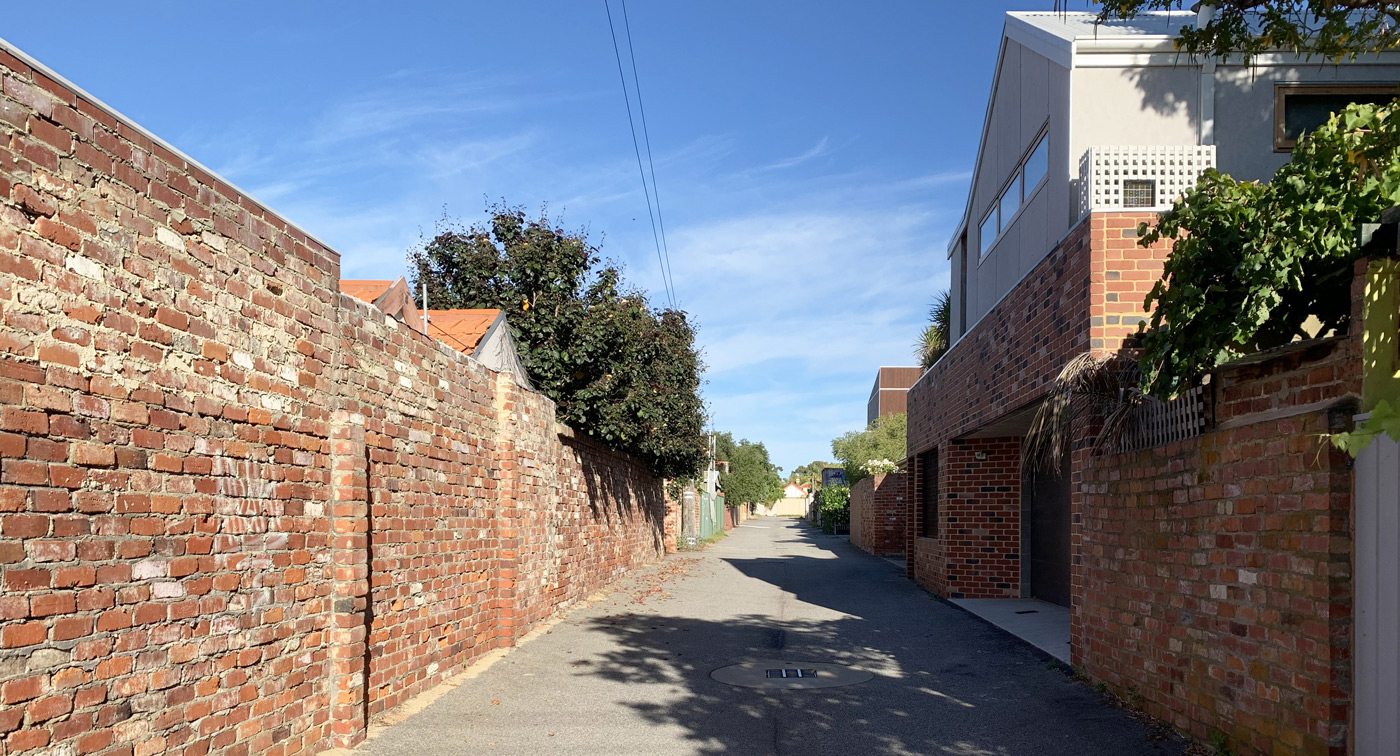In recent years laneways have gained popularity fuelled by the explosion of CBD laneway activation programs around the world. Many of Perth’s CBD laneways have been successfully transformed however use of the more humble suburban laneway is also changing. Inner city suburban laneways are a valuable opportunity for infill density and becoming primary streetscapes for many. The extent of rear subdivisions presents an opportunity, as well as obligation, to improve the experiential quality of laneways as the primary access points to many properties. To establish the conditions allowing them to succeed as active social spaces laneways require further consideration and definition within our planning frameworks.
Both local council and state planning frameworks currently view rear laneways as a ‘service interface’. Local council planning policies generally require properties with a rear laneway to take all vehicle access off the laneway to preserve the active nature of our primary streetscapes. Owners of properties adjoining narrow laneways are often required to cede a 1.5m setback in order to progressively widen laneways over time with the aim of accommodating dual direction vehicle movement, rubbish collection vehicles and compliant turning circles into properties.
Current suburban laneways are commonly dominated by nil setbacks, continuous blank garage doors, high impermeable fences, inadequate lighting, a lack of soft landscaping and minimal overlooking windows generating very low levels of interactivity and passive surveillance. These are uncontrolled, un-curated spaces reflecting their historic use as a ‘service interface’. Some local councils, predominantly in the western suburbs, have even sold rear laneways off to adjoining property owners which is a short sighted missed opportunity. This is often fuelled by maintenance requirements and complaints from local residents in relation to safety in these spaces.
Our collective thinking and planning frameworks need to respond to the changing use of suburban laneways as primary addresses for many. Laneways could easily become active social spaces supporting the growth of local communities. They should be acknowledged as exciting inner city adaptive re-use opportunities. Both state and local council planning frameworks should develop dedicated laneway policies defining and curating laneways as an active 'community interface’ rather than a utilitarian ‘service interface’.
March 2021. Edited February 2025






